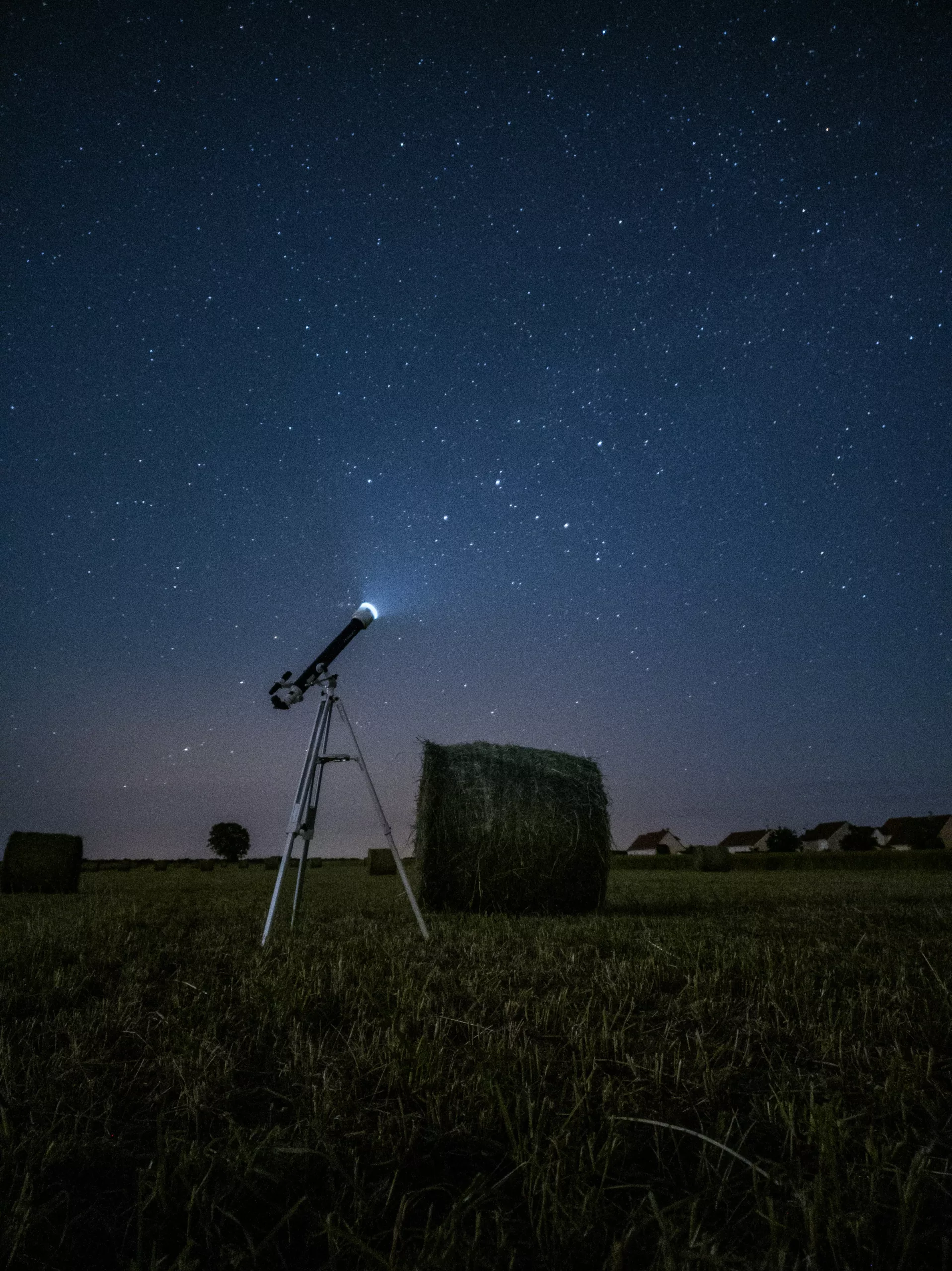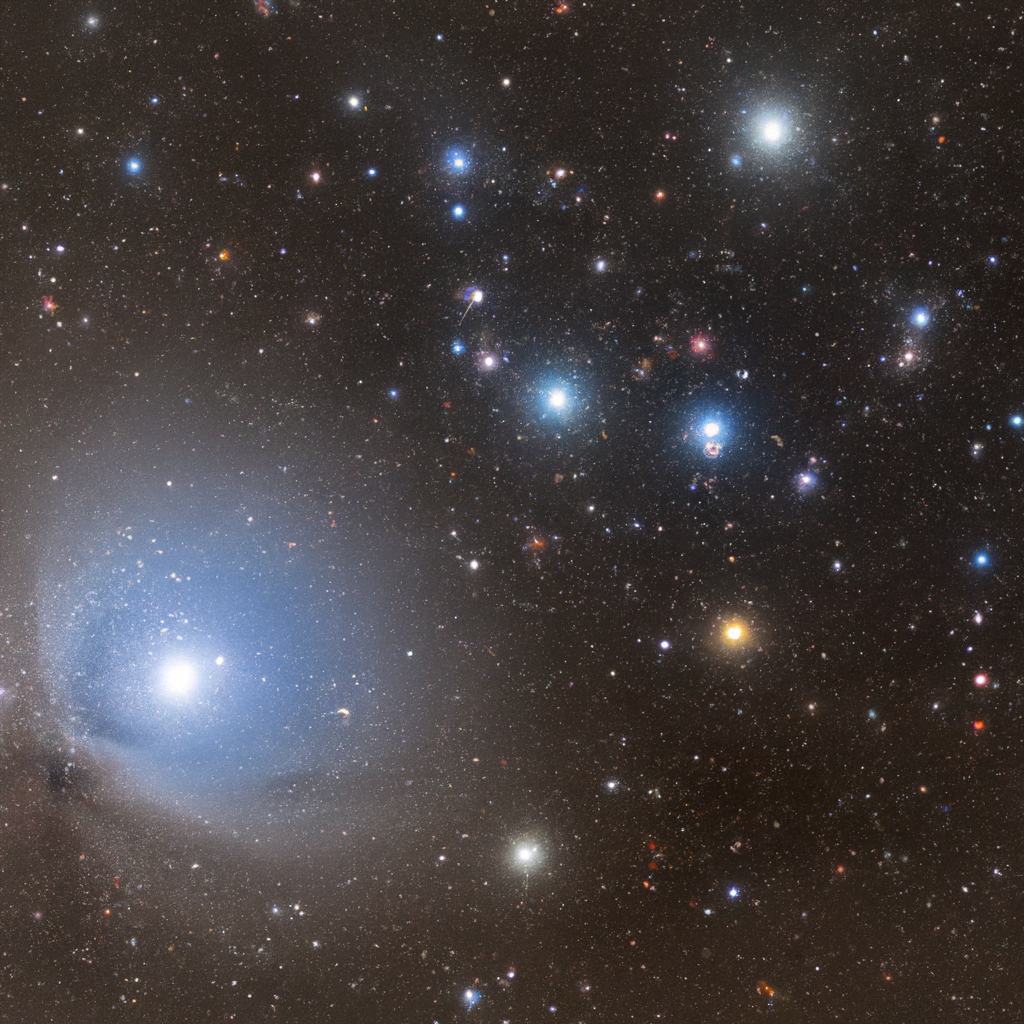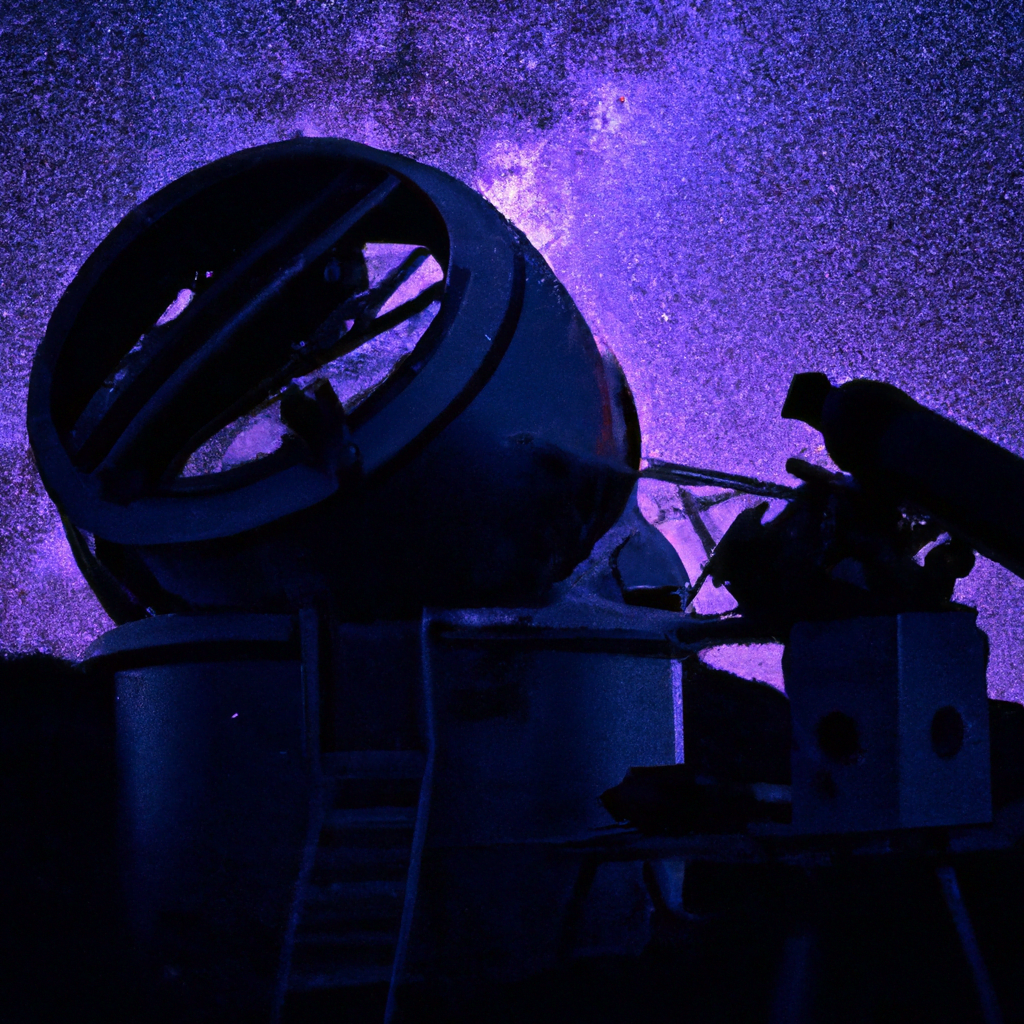Filters play a crucial role in enhancing telescope observations by selectively allowing certain wavelengths of light to pass through while blocking others. Acting as a lens for the sky, filters help astronomers isolate specific colors and features in celestial objects, revealing hidden details and uncovering valuable insights about distant galaxies, stars, and planets. By enhancing contrast, reducing glare, and eliminating unwanted light pollution, filters enable telescopes to capture clearer, sharper images that provide a deeper understanding of the universe. Whether it is studying the composition of distant worlds or observing the intricate structures of nebulae, filters act as a valuable tool in unraveling the mysteries of the cosmos.

Table of Contents
Improved Clarity and Contrast
When it comes to observing celestial objects through a telescope, clarity and contrast are paramount. Filters play a crucial role in reducing atmospheric interference, allowing for clearer and sharper images. By blocking certain wavelengths of light, such as those emitted by artificial sources or light pollution, filters help enhance the contrast of celestial objects against the background sky, making them easier to see and study. This improved clarity and contrast greatly enhances the overall observing experience and allows for more detailed scientific research.
Reduction of Atmospheric Interference
The Earth’s atmosphere is not a perfectly transparent medium for observing the night sky. Various atmospheric conditions, such as turbulence, aerosols, and moisture, can distort and blur the light coming from celestial objects. However, by using filters that are specifically designed to reduce atmospheric interference, astronomers can mitigate these effects. By blocking certain wavelengths of light that are most affected by atmospheric conditions, filters help to produce clearer and sharper images. This reduction in atmospheric interference allows for more accurate and detailed observations of celestial objects.
Enhanced Contrast of Celestial Objects
One of the primary functions of filters is to enhance the contrast of celestial objects. In astronomy, contrast refers to the difference in brightness between an object and its background. By selectively filtering out specific wavelengths of light, filters can increase the contrast of celestial objects against the dark sky. This enhanced contrast makes it easier to distinguish faint details and subtle features in objects such as planets, nebulae, and galaxies. It also enables astronomers to study the intricate structures and formations within these celestial bodies, leading to a deeper understanding of our Universe.
Improved Detection of Faint Objects
Telescopes equipped with filters can greatly improve the detection and observation of faint objects. Faint objects, such as distant galaxies or dim stars, often appear very faint or even invisible when observed without the aid of filters. However, by using filters that are designed to transmit specific emission lines or block unwanted light, astronomers can increase the visibility of these faint objects. Narrowband filters, for example, allow only a specific wavelength of light to pass through, enhancing the contrast of emission nebulae or planetary nebulae against the background sky. This improved detection of faint objects opens up new avenues for scientific research and discovery.
Selective Wavelength Observation
Filters come in various types, each designed to selectively transmit or block specific wavelengths of light. This selective wavelength observation is crucial for astronomers as different celestial objects emit or reflect light at different wavelengths. By using filters, astronomers can isolate and study specific emission lines or wavelengths, allowing for a more detailed analysis of the composition and properties of celestial objects.
Narrowband Filters for Specific Emission Lines
Narrowband filters are designed to transmit only a narrow range of wavelengths, typically corresponding to specific emission lines. For example, filters that transmit the hydrogen alpha (Hα) wavelength are commonly used to observe and study ionized hydrogen regions, such as emission nebulae and Hα regions in galaxies. By isolating these specific emission lines, narrowband filters allow astronomers to delve deeper into the characteristics and processes taking place within these celestial objects.
Broadband Filters for General Observation
Broadband filters, on the other hand, transmit a wide range of wavelengths, allowing for general observation and imaging across different regions of the electromagnetic spectrum. This type of filter is commonly used in amateur astronomy for observing a wide range of celestial objects, including planets, stars, and galaxies. Broadband filters are ideal for capturing color images of celestial objects, as they transmit a broad spectrum of visible light, allowing for the natural colors of these objects to be revealed.
Customizable Filters for Scientific Research
In addition to narrowband and broadband filters, astronomers often require customized filters for specific scientific research purposes. Customizable filters can be designed to transmit or block specific wavelength ranges, tailored to the specific objectives of the research. These filters are essential for studying unique phenomena or conducting specialized observations. By providing precise control over the wavelengths of light that pass through the telescope, customizable filters enable astronomers to gather precise and accurate data for their research projects.
Color Visualization
One of the fascinating aspects of observing celestial objects is seeing their true colors. Filters can enhance the color visualization of these objects, bringing out the natural hues and tones that may be otherwise challenging to perceive. By selectively transmitting certain wavelengths of light, filters can enhance and reveal the true colors of celestial objects, making the observation experience more vibrant and captivating.
Revealing the Natural Colors of Celestial Objects
Celestial objects, such as galaxies and nebulae, emit light at various wavelengths. However, due to atmospheric conditions and light pollution, these natural colors can be difficult to perceive. Filters, especially those designed for broadband observation, can help accentuate the natural colors of these objects. By blocking out unwanted wavelengths, filters enhance the transmission of specific colors, revealing the true beauty and intricacy of celestial objects as they exist in the vastness of space.
Enhancing Visibility of Nebulae and Galaxies
Nebulae and galaxies, with their immense sizes and intricate structures, often require filters to enhance their visibility. These celestial objects emit light at different wavelengths due to various physical processes occurring within them. Filters designed to transmit specific emission lines can isolate those wavelengths, highlighting the structure and details of nebulae and galaxies. This enhanced visibility allows astronomers to better understand the formation, evolution, and properties of these celestial objects.
Minimizing Light Pollution
Light pollution is a significant concern for astronomers, as it can greatly affect the visibility and quality of observations. Filters offer a means to minimize the effects of light pollution, allowing astronomers to conduct observations in areas with high levels of artificial lighting.

Reduction of Skyglow
Skyglow refers to the brightening of the night sky caused by artificial lighting. It can significantly impact the visibility of celestial objects, making it difficult to observe or study them. Light pollution filters are designed to block out the specific wavelengths of light emitted by common outdoor lighting sources, such as streetlights, thereby reducing skyglow. By using these filters, astronomers can observe the night sky under darker and more natural conditions, improving the overall visibility and clarity of celestial objects.
Diminished Effects of Urban Lights
Observing the night sky from urban areas can be particularly challenging due to the abundance of artificial light sources. Urban areas are typically subjected to high levels of light pollution, which can wash out the faint details of celestial objects. Filters specifically designed to mitigate the effects of urban lights can help astronomers overcome these challenges. By selectively blocking out the wavelengths of light emitted by urban lighting, these filters enhance the visibility of celestial objects, even in light-polluted urban environments.
Improved Observations in Light-Polluted Areas
Filters not only help minimize light pollution but also enable astronomers to conduct observations in areas with high levels of light pollution. Light pollution filters are designed to block out the specific wavelengths of light emitted by common outdoor lighting sources while transmitting the desired wavelengths for observation. This allows astronomers to capture clear and meaningful data even in light-polluted areas. By using these filters, astronomers can continue their observations and research without the need to travel to dark sky locations, making astronomy more accessible to a wider audience.
Protection and Preservation
Apart from enhancing observation quality, filters also serve an important role in protecting and preserving telescopes and optics.
Filtering Harmful Ultraviolet and Infrared Radiations
Ultraviolet (UV) and infrared (IR) radiations can be harmful to both human eyes and sensitive telescope optics. Filters designed specifically for UV and IR protection help in filtering out these potentially damaging wavelengths, ensuring the safety of both the observer and the equipment. By blocking UV and IR radiations, these filters extend the lifespan of telescopes and prevent damage to sensitive optical components.
Preventing Damage to Optics
Filters act as a barrier between the telescope optics and harmful environmental factors such as dust, moisture, and airborne particles. Dust and debris can settle on telescope optics and degrade the quality of observations over time. Filters help prevent direct contact between these particles and the optics, reducing the risk of scratches or damage. Additionally, filters can be easily replaced or cleaned, providing an added layer of protection to the telescope optics.

Extending the Lifespan of Telescopes
Telescopes are significant investments, and caring for their optics and components is essential for their longevity. Filters play a crucial role in extending the lifespan of telescopes by minimizing the possibility of damage and degradation. By protecting against harmful radiation, dust, moisture, and debris, filters ensure the optimal performance and longevity of the telescope. This allows astronomers to continue their observations for longer periods without the need for frequent repairs or expensive replacements.
Enhancing Solar Observations
Filters also play a crucial role when it comes to observing our closest star, the Sun. The intense brightness of the Sun requires specialized filters to ensure safe observation and to reveal the intricate details of solar phenomena.
Solar Filters for Safe Sun Observation
Observing the Sun directly without proper protection can cause severe eye damage or even blindness. Solar filters are specifically designed to block out most of the Sun’s intense light and harmful infrared and UV radiations, allowing for safe Sun observation. These filters provide astronomers with the ability to study and capture images of solar features, such as sunspots, solar flares, prominences, and filaments, without the risk to their eyes or equipment.
Revealing Sunspots and Solar Phenomena
Sunspots are temporary dark spots on the Sun’s surface, which are cooler compared to the surrounding areas. By using solar filters, observers can reveal these intricate features and study their formations, movements, and characteristics. Solar filters enhance the visibility of sunspots against the bright solar disk, allowing astronomers to gain insights into the Sun’s activity and magnetic fields. Additionally, solar filters also reveal other solar phenomena, such as prominences, flares, and granulation, enabling a more comprehensive understanding of our closest star.
Observing Solar Eclipses
During a solar eclipse, the Moon passes between the Earth and the Sun, partially or completely blocking its light. While it is an extraordinary and captivating event to witness, observing a solar eclipse requires specialized filters to prevent eye damage. Solar filters designed for eclipse observation allow astronomers and enthusiasts to safely observe and capture the stunning beauty and rare moments of a solar eclipse without risking their vision. These filters block out the majority of the Sun’s intense light, allowing for a clear and protected view of this celestial spectacle.
Filter Types and Applications
Filters come in various types, each designed to serve specific purposes and cater to different observation needs. Understanding the different filter types and their applications is essential for astronomers to make informed choices.

Broadband Filters
Broadband filters transmit a wide range of wavelengths across multiple regions of the electromagnetic spectrum. These filters are commonly used for general observation and imaging purposes, allowing astronomers to capture a broad spectrum of light. Broadband filters are particularly useful for capturing natural colors, as they transmit a wide range of visible light. They are also popular among amateur astronomers due to their versatility and ability to capture a wide range of celestial objects.
Narrowband Filters
Narrowband filters, as the name suggests, transmit only a narrow range of wavelengths. These filters are often used for observing and studying specific emission lines produced by celestial objects. By isolating these emission lines, astronomers can gain insights into the composition, properties, and processes taking place within these objects. Narrowband filters are commonly used in astrophotography to capture the intricate details of nebulae, supernova remnants, and other emission nebulae.
Line Filters
Line filters, also known as interference filters or bandpass filters, are designed to transmit a specific wavelength or a narrow range of wavelengths. These filters are useful for isolating specific emission or absorption lines, allowing astronomers to study the characteristics, composition, and dynamics of celestial objects. Line filters can be customized to transmit specific wavelengths depending on the research objectives or the properties of the target object.
Neutral Density Filters
Neutral density (ND) filters are designed to evenly attenuate the intensity of all wavelengths of light. These filters are primarily used to reduce the overall brightness of an object or the background sky. ND filters are particularly useful when observing extremely bright objects, such as the Moon or the Sun, as they help reduce the intensity of light without significantly affecting the color or contrast of the object. By using ND filters, astronomers can observe and capture these bright objects without overexposing their images.
Polarizing Filters
Polarizing filters are commonly used in terrestrial photography to reduce glare and enhance color saturation. In astronomy, polarizing filters serve a similar purpose. They can help reduce glare from the Moon or bright planets, allowing for clearer observations and imaging. Polarizing filters can also enhance contrast and reveal subtle details on the surface of celestial objects. However, they are not widely used in astronomical observations and are more commonly employed for planetary observations.
Infrared Filters
Infrared filters transmit wavelengths in the infrared region of the electromagnetic spectrum. These filters are beneficial for observing celestial objects that emit or reflect primarily in the infrared, such as certain stars, planetary atmospheres, and interstellar dust clouds. Infrared filters enable astronomers to capture images or gather data that may not be visible in the visible spectrum. They are particularly essential for conducting infrared astronomy and exploring the invisible aspects of the Universe.

Ultraviolet Filters
Ultraviolet filters transmit wavelengths in the ultraviolet region of the electromagnetic spectrum. Observing in the UV spectrum can provide valuable information about the characteristics and processes of celestial objects, such as the temperature and composition of stars, interstellar gas, and dust. Ultraviolet filters allow astronomers to selectively observe and study these UV-emitting objects without the interference of other wavelengths of light.
Solar Filters
Solar filters are specifically designed to enable safe observation of the Sun. These filters block out most of the Sun’s intense light and harmful radiations, allowing astronomers to study the Sun’s features and phenomena without risking their eyesight. Solar filters come in different types and designs, including full-aperture filters that cover the entire telescope aperture and smaller filters that attach to the telescope’s eyepiece.
Light Pollution Filters
Light pollution filters, also known as skyglow filters, are designed to minimize the effects of light pollution on observations. These filters selectively block specific wavelengths of light emitted by common outdoor lighting sources, allowing for clearer observations of celestial objects. Light pollution filters are particularly useful in urban or heavily light-polluted areas, where the night sky’s natural darkness is compromised by artificial lighting.
Choosing the Right Filter
Choosing the right filter for a specific observation or research project requires careful consideration of various factors. Astronomers must take into account their objectives, target objects, and the characteristics of the filters themselves.
Consideration of Objectives and Targets
The first step in choosing the right filter is to identify the objectives of the observation or research project. Whether it is studying emission lines, capturing natural colors, or reducing light pollution, having a clear understanding of the objectives helps narrow down the filter choices. Additionally, considering the specific targets, such as stars, galaxies, or nebulae, can further guide the selection process.
Filter Factors: Central Wavelength and Bandwidth
The central wavelength and bandwidth of a filter are crucial factors to consider. The central wavelength determines which range of wavelengths the filter will transmit or block. It should be chosen based on the specific emission lines or features of the object being observed. The bandwidth, on the other hand, determines the range of wavelengths around the central wavelength that the filter allows to pass. Narrowband filters have a smaller bandwidth, allowing for more precise observation of specific features, while broadband filters have a wider bandwidth, enabling general observation and imaging.
Understanding Transmission Curves and FWHM
Astronomers should also consider the transmission curves and Full Width at Half Maximum (FWHM) of filters. Transmission curves provide information about the filter’s efficiency in transmitting specific wavelengths of light. The FWHM indicates the width of wavelengths that the filter allows to pass at half of its maximum transmission. Understanding these characteristics helps astronomers choose filters that are most suitable for their observation needs and objectives.
Matching Filters to Specific Telescopes
Filters should be carefully matched to the specific telescope being used. The size, focal length, and optical design of the telescope can affect the performance and compatibility of filters. It is essential to consider the aperture and the threading of the telescope’s filter holder to ensure proper installation and effective use of the filters. Matching filters to the telescope’s specifications ensures optimal transmission and minimizes any potential vignetting or distortion effects.
Integration with Imaging Systems
Filters are crucial components of imaging systems, enhancing the quality and versatility of astrophotography. Integrating filters into imaging systems enables astronomers to capture stunning images and gather valuable data.
Enhancing Astrophotography
Filters greatly enhance astrophotography by selectively transmitting or blocking specific wavelengths of light. They allow astronomers to capture detailed and vibrant images of celestial objects, revealing various structures, colors, and details. Filters designed for specific wavelengths or emission lines can highlight specific features or phenomena, adding depth and richness to astrophotographs.
Filter Wheels and Rotators
Filter wheels and rotators are accessories that facilitate the use of multiple filters in imaging systems. A filter wheel allows astronomers to quickly change between different filters without needing to manually swap them out. This enables efficient and uninterrupted imaging sessions, especially when capturing different objects or observing multiple emission lines. Rotators, on the other hand, allow the precise positioning and orientation of filters. They are particularly useful when imaging targets with specific orientations, such as galaxies or nebulae.
Multi-Filter Imaging
Multi-filter imaging involves capturing images of the same celestial object using multiple filters and combining them to enhance the final image. by capturing different wavelengths or emission lines, astronomers can reveal different aspects and features of the object. Multi-filter imaging techniques can bring out hidden details, highlight specific characteristics, or create stunning composite images that capture the full beauty and complexity of celestial objects.
Filter Maintenance and Cleaning
Proper maintenance and cleaning of filters are essential to ensure their longevity and optimal performance. Taking the necessary precautions and following best practices can help extend the lifespan and maintain the efficiency of filters.
Handling and Storage Precautions
Filters should be handled and stored with care to avoid scratches, fingerprints, or other damage. Ideally, filters should be stored in protective cases when not in use. It is important to avoid touching the filtering surfaces with bare hands, as natural oils and debris can degrade the performance of the filters. Using clean, lint-free optical tissues or gloves specifically designed for handling filters can help minimize the risk of contamination.
Cleaning Techniques and Best Practices
When cleaning filters, it is essential to use proper techniques and cleaning solutions. Filters should be gently blown or brushed to remove any loose dust or debris. If additional cleaning is required, mild lens cleaning solution or isopropyl alcohol can be applied to a clean, lint-free cloth and used to gently wipe the filter surface. It is important to avoid using excessive force, abrasive materials, or harsh chemicals that can damage the filter coating. Following the manufacturer’s cleaning instructions and recommendations is crucial to ensure the longevity and performance of the filters.
